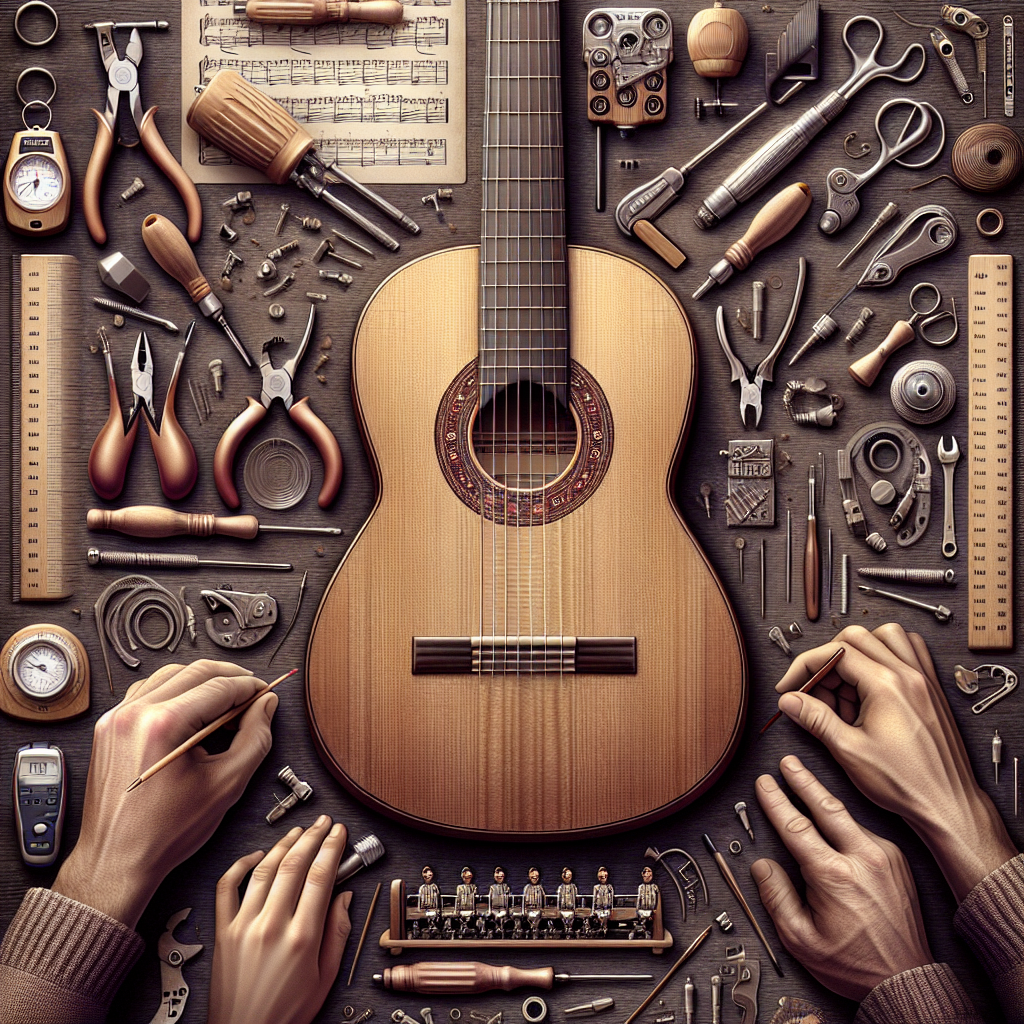
10 Steps to Upgrade Your Guitar’s Tuners for Better Stability
Having a guitar that stays in tune is every guitarist’s dream. An essential part of achieving this lies in the guitar’s tuners. Upgrading your tuners can significantly improve tuning stability and overall performance. Whether you’re a beginner or a seasoned musician, understanding how to upgrade your tuners is a skill worth having. In this guide, we’ll walk you through the process step-by-step, so you can enjoy a more stable and reliable guitar.
1. Understanding the Importance of Upgrading Tuners
Tuning stability is critical for any guitarist. Without it, your playing can sound off, even if your technique is flawless. Tuners are the primary mechanism for tightening or loosening the strings, and poor-quality or worn-out tuners can lead to frequent detuning. Upgrading to high-quality tuners can provide a smoother tuning experience, better hold of tune, and often a longer lifespan for your guitar strings.
2. Identifying the Right Tuners for Your Guitar
Before purchasing new tuners, you need to identify the right set for your guitar. Consider the type of guitar you have — whether it’s an acoustic, electric, or a bass guitar — as tuner designs can vary. It’s also vital to check the headstock’s hole size and style (vintage, modern, locking, etc.) to ensure compatibility. Many websites and music stores provide specifications for their tuners, making it easy to select the right fit.
3. Gathering Your Tools and Materials
To complete the tuner upgrade, you’ll need a few tools and materials. These include a screwdriver (typically a Phillips head), a drill (if re-drilling is necessary), masking tape, and the new set of tuners. Having a clean workspace and a stable guitar stand are also beneficial to keep your instrument safe during the upgrade.
4. Removing the Old Tuners
Start by loosening and removing the guitar strings to access the tuners easily. Use the screwdriver to unscrew the existing tuners gently. Be sure to keep the screws in a safe place if you plan on reusing them. Carefully pull out the tuners from the headstock and set them aside.
5. Installing the New Tuners
Place your new tuners into the headstock’s holes, ensuring they fit snugly. Line up the screw holes with the existing holes on your guitar. If the new tuners don’t align, you may need to use a drill to make minor adjustments. Use masking tape to mark drill points if necessary to prevent slipping. Once aligned, screw the tuners into place carefully, ensuring each one is secure without overtightening, which can damage the wood.
6. FAQs about Upgrading Guitar Tuners
- Can I upgrade tuners on any guitar? Yes, but ensure the tuners are compatible with your guitar’s headstock and design.
- How much should I expect to spend on tuners? Prices can range from $20 to $200, depending on quality and brand.
- Do I need professional help to change tuners? While it’s a manageable DIY task, seeking professional help ensures precision, especially for expensive instruments.
- How do locking tuners differ from standard ones? Locking tuners have a mechanism to lock strings in place, offering enhanced stability and quicker string changes.
- What’s the advantage of vintage-style tuners? Vintage tuners often complement older guitars aesthetically and may provide a softer tuning feel.
- How often should I replace my tuners? Typically, tuners should last many years, only needing replacement when showing signs of wear or slipping.
7. Testing Your New Tuners
Re-string your guitar, tuning each string as you normally would. Play through some chords and bend notes to test the stability. Listen and feel for any slippage or loosening, adjusting the screw tension as necessary. Properly installed tuners should hold the guitar in tune for extended periods.
8. Why Quality Tuners Make a Difference
Quality tuners provide consistency in tuning retention, reducing the frequency of retuning. They contribute to a better overall sound due to less tension fluctuation and enhance the ultimately playing experience by offering smoother tuning action.
9. Tips for Maintaining Your Tuners
To keep your new tuners performing well, regularly check for tight screws and clean them to prevent rust and dirt build-up. Avoid exposing your guitar to extreme temperature changes that can affect metal parts. Occasionally lubricating parts can also prolong their effectiveness.
10. Conclusion: Enjoy the Benefits of Better Stability
By upgrading your guitar’s tuners, you’ve taken a significant step toward a more enjoyable playing experience. With better stability and reliable tuning, you can focus on your music without constant tuning interruptions. Enjoy your improved instrument, and let your creativity flow with confidence and precision.
For further reading on guitar maintenance and upgrades, visit Guitar World for expert tips and advice from industry professionals.